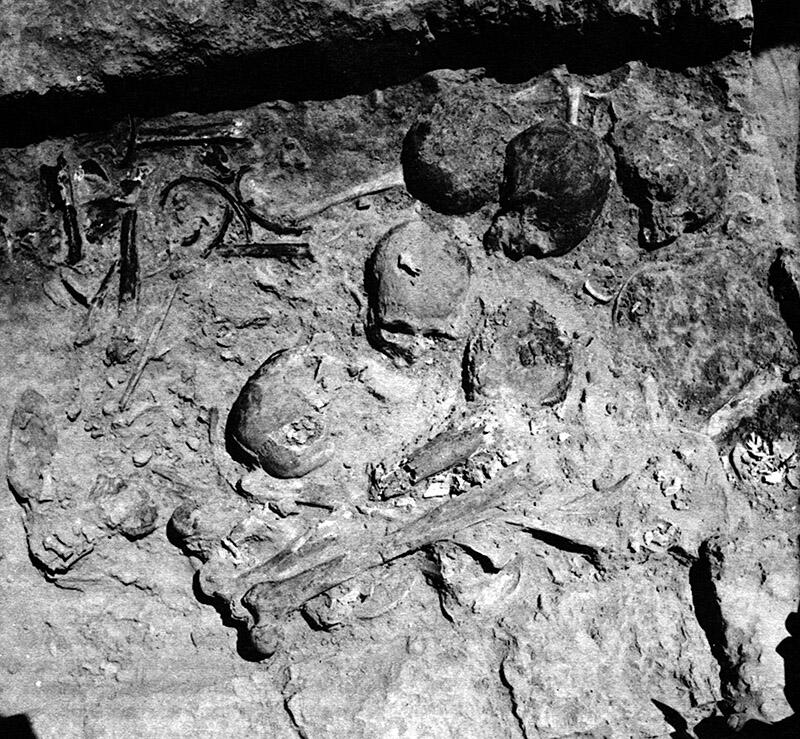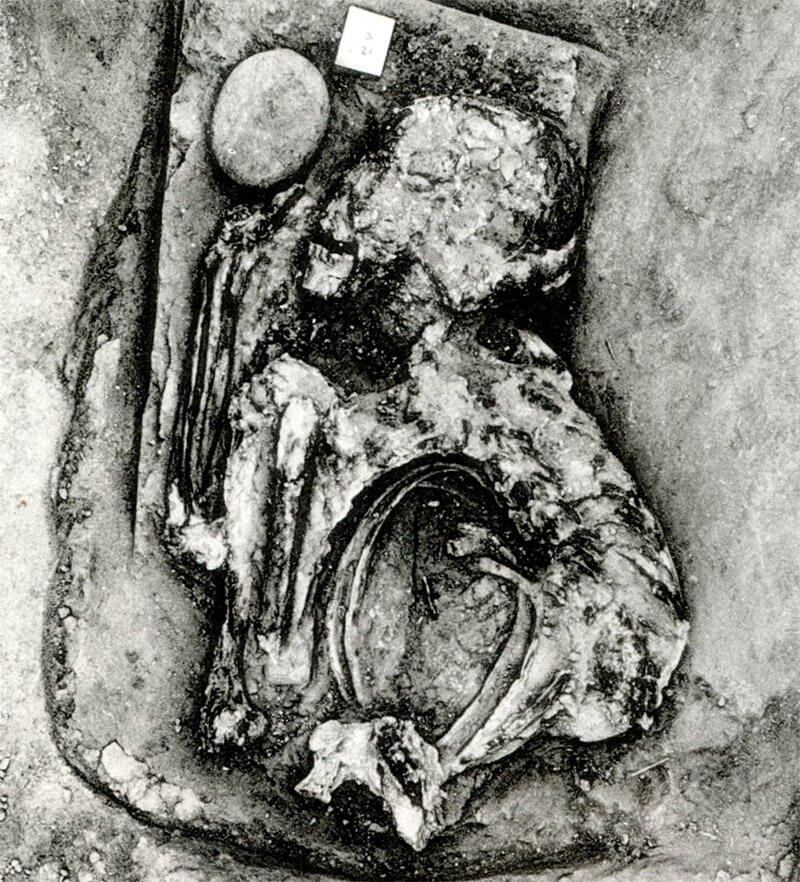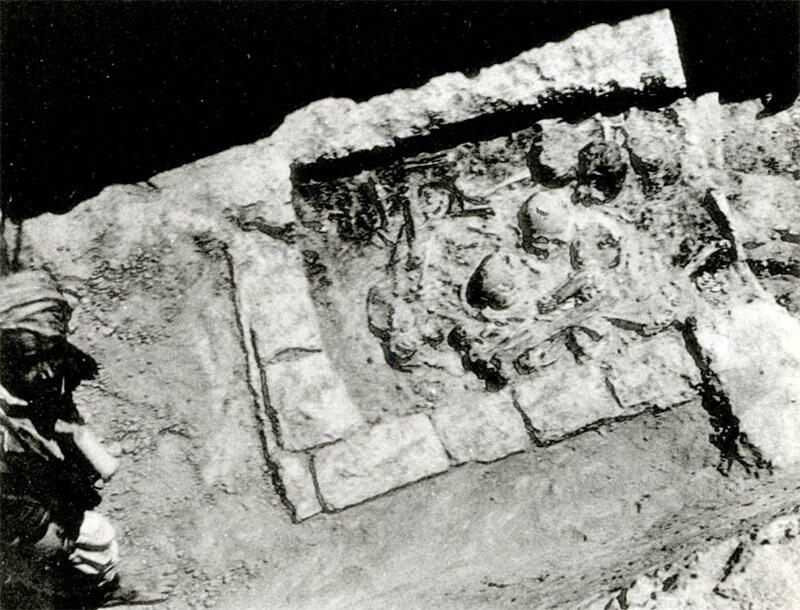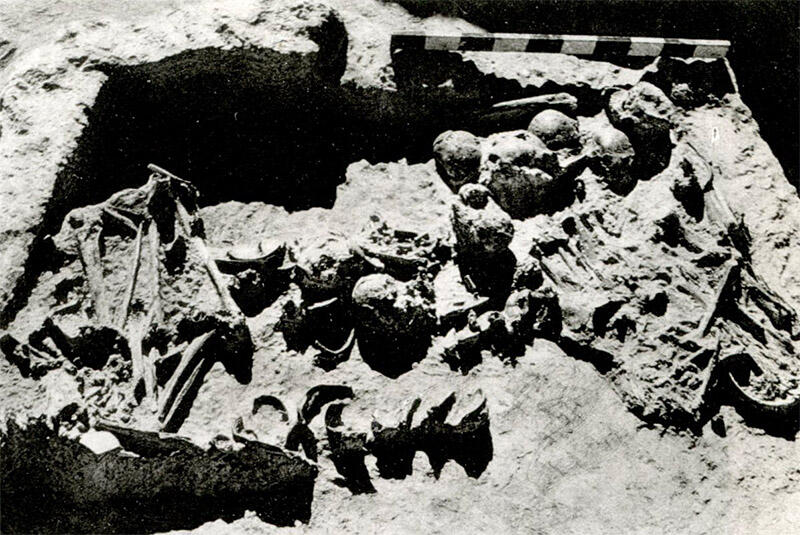This ossuary or collection of bones on Mound C is from the Mundigak Period III [3400-2900 BCE]. Towards the end of Period IV [2900-2400 BCE] , it seems as if the "palace" and "temple" were burned down, and not re-inhabited although other parts of the site were. Nonetheless, it is hard to draw too many conclusions since the definitions of the various sub-periods within Period IV remain open to reinterpretation and re-excavation. Sylvia Matheson writes here of the Period IV disjuncture:
"Had the conquerors set their surviving victims to work to level their own lovely buildings and raise up the coarse new ones, or perhaps the people of the Columns had been completely wiped out in the holocaust? Possibly the survivors had fled to the south or the west, escaping with their lives and their most precious belongings— perhaps the women and children fled before the enemy attacked, leaving only the menfolk to defend the settlement? Who could tell? For strangely enough, in spite of the slaughter that must have taken place, not a single human bone had been found among the ashes and the ruins of the houses and monument. The dead had all been removed perhaps to be given a mass burial. But if so, where? So far only one very shallow, communal grave had been found at the foot of Mound A, where seven bodies had been tumbled together as though in great haste and without ceremony. Could it possibly be that a mere handful of men was left to defend the temple palace in the narrow passageway, and that perhaps as a last gesture, they had made a concerted rush on the enemy at the foot of the slope, and seven of the handful had died, maybe one or two only managed to escape?
"Perhaps when the skulls of the seven corpses were examined (they were still in Kabul in their protective plaster), we would discover if they were indeed long-headed Caucasians.
"Perhaps, when the surrounding mounds have been excavated, some of the mystery surrounding Mundigak will be cleared up. I make no apology for letting my imagination run away with me in the meantime, for in Archaeology from the Earth Sir Mortimer Wheeler himself said, 'we cannot properly understand the past unless we have a living sympathy with the human stuff which its relics represent.... We cannot understand for example, the structural mechanism of an ancient burial mound unless we can bring to bear upon its details a rational imagination capable of comprehending and vitalizing them . . . too often we dig up things, unrepentantly forgetful that our proper aim is to dig up people.” (Sylvia Matheson, Time off to Dig, London, 1961, pp. 108-109)
Images
1.- 4. Mundigak Ossuary Period III [3400-2900 BCE], from Jean-Marie Casal, La civilisation de l'Indus et ses enigmes, Fayard, Paris, 1969, p. 64. These were the four images Casal included in his book Fouilles de Mundigak, Paris (1961) and identified as from the "necropolis" with Images 1 and 3 as Ossuary (C. 24), Image 2 described as an individual tomb (C. 21), and Image 4 as Ossuary (C. 27).








